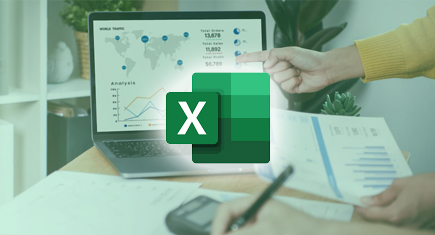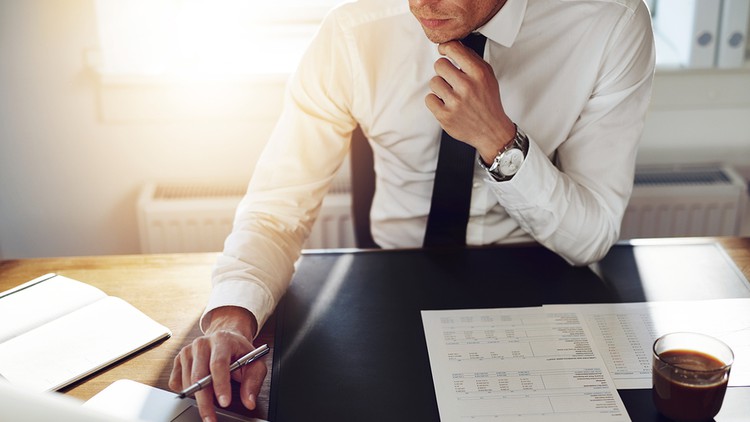The COVID-19 pandemic has changed so many things within our society. Not the least of which is how we operate our businesses. In this light, I want to talk about a subject that I’ve discussed several times in the past. I’ve always believed that business owners should hold cash beyond their ordinary cash flow. But in today’s post, I want to explore how this might have changed amidst the coronavirus outbreak. So, how much cash is necessary in a COVID world?
TIME INDEX:
- 00:45 – How Much Cash is Necessary in a COVID World
- 01:23 – Are Business Owners Poor Money Managers
- 03:46 – Two Main Reasons Why
- 07:36 – The Reality
- 08:54 – How Much Cash Do We Need
- 12:16 – What About the Alternatives
- 13:13 – Cash is Freedom
- 14:41 – Summary
Are Business Owners Poor Money Managers?
I remember watching the news when COVID-19 first hit the United States and hearing Marco Rubio say that 5.3 million business owners had to have funding from the government in order to survive. As I watched these reports come out, I kept asking myself, “Are business owners, such poor money managers, that we need the government to bail us out?” As it turns out, the answer to that question is yes. We are. Without the PPP, EIDL, and the CARES Act, many businesses would have gone under.
The PPP has since been revised to allow for total forgiveness and the expenses that the funding were used for can be deducted from your taxes. Business owners could apply for these funds if they just thought that they might be negatively affected by the coronavirus. You see, we often have this mindset that we are strapped for cash, regardless of what numerator is in our accounts. That mindset has to do with the cash flow of the business.
Nobody Hits Their First Shot
Despite what we have in our bank accounts, when the cash flow that is generated from a steady stream of business tightens up, so do we. We become tense and worried about how we’re going to weather the storm. There are two primary reasons that business owners feel they are cash strapped.
In my own life, I have the attitude that if there is no risk, there is no reward. Many entrepreneurs are natural risk-takers. If they weren’t, they wouldn’t have started their own business. As a result, we tend to add risk to our businesses by spending cash. Even though we might be using it for good things, we are still using it to create risk by placing it in illiquid assets that may not yield the return we are looking for.
The other reason is that nobody hits their first shot. Here, in East Tennessee, we have an amusement park called Dollywood. It’s a beautiful park set in the Great Smoky Mountains and draws millions of visitors every year. As you might expect, they have all of the usual midway attractions, rides, food, games, and shows. One of my favorite games on the midway is the classic basketball game. You shoot the ball at the hoop and win a prize. Except, it’s not as easy as that. The hoop has been manipulated in some form.
Either it’s too high or the hoop itself is warped so that it’s not quite as forgiving as normal. Inevitably, you’re going to brick your first shot. The same is true of business ownership. It takes time, money, and multiple shots. It takes a little bit of failure to learn how to succeed.
Business Owners Are Failing Less
According to the U.S. Bureau of Labor Statistics, American entrepreneurship is on the rise and is experiencing greater success. We are seeing more startups and fewer business “deaths” or failures. In fact, U.S. employers are failing 30 percent less than they did in the 1970s. This is partially due to the fact that modern business owners are more dedicated to planning and are becoming better educated in all areas of business.
On average, two-thirds of small businesses survive the first two years, half survive five years, and one in three make it 10 years. So we are seeing some improvement in the success rate of small business startups, but those numbers are still pretty dismal. This brings me back to the original subject. A study by U.S. Bank found that 82% of business failures are the result of poor cash flow management or a lack of understanding of how cash flow contributes to the business.
With the events of 2020, particularly COVID, more and more business owners are beginning to understand the importance of having cash on hand. So how much cash is necessary in a COVID world?
Appropriate Cash Levels
To know just how much cash we should have on hand, we must first break this into two categories: home and business. Now, this varies slightly if you’re a single-income or dual-income household as well, but the two primary categories are home and business. The reason for the differentiation between dual and single-income families is that if you’re a dual-income family, it’s much less likely that both of you will lose your jobs at the same time. With that said, let’s look at the two categories a little closer.

Envision the Future: Financial Modeling Using Excel
Last Updated: 2022-07-27 05:07:39
In this course we are going learn how to financially model a business using Excel. Financial models underpin strategic and business planning, solicitations for financing
Home
First, you need to figure up your monthly expenses. Your mortgage or rent payment, utilities, car payments, tuition fees, household supplies, groceries, entertainment, and anything else that you spend money on each month should be factored in. Whatever that monthly total is, that’s what you should have in your checking account at all times. This applies to single and dual-income families. You should always have enough money to cover one month’s expenses in your primary checking account.
Now, here’s where the number of incomes really come into play. Depending on whether you’re a one or two-income family, you will need between 3 and 6 months of monthly expenses in your savings account. If you spend $10,000 per month then you’re going to need $30,000 to $60,000 in your savings account. The households with one income source will need to have enough in their savings to float them for up to six months, should they find themselves without an income.
Business
Just like with your home expenses, you need to find your monthly operating expenses. This is everything from insurances and labor to inventory, mortgage, and utilities. If it comes out before your bottom line, it gets counted. Like your home finances, the total of one month’s operating expenses should be in your business’s checking account at all times.
Additionally, you should have a savings account for your business. If you don’t, stop what you’re doing and open one up. Now that you know what your monthly operating expense is for your business, you need to have enough cash in savings to float your business for 3 to 6 months. If you operate on $200,000 per month, then you may need to have $1.2 million in savings. I actually have a client whose monthly operating expenses equalled that amount. I told him that I wanted him to have $1.2 MM in savings because of the nature of his business, and guess what? COVID hit. But unlike many other business owners, he was in a position where he didn’t need to rely on PPP money.
He began looking at employee retention credits and found that he was in a very beneficial position because he had prepared by having cash on hand. It gets even better, folks. When the market fell, he was able to invest significant amounts of cash into investment positions that were selling at rock bottom prices. As the market rebounded, he saw significant returns on his $1.2 MM, and now his net worth is drastically higher than it was at the beginning of the pandemic. This was only possible because he kept cash on hand for his business.
Summary
Credit cards, credit lines, and equity can be useful in a pinch. Many business owners know this from firsthand experience. But these are not optimal cash sources. Not only do these add up to debt, but often lending becomes much more difficult to obtain in hard markets. The bottom line is that cash equals freedom. Just like in the situation of the client experience that I shared with you, “too much” cash can create opportunities. So, how much cash is necessary in a COVID world? The same amount that has always been necessary.
Keep enough to cover 1 month’s expenses in your personal and business checking accounts. Likewise, hold 3 to 6 months in your personal and business savings accounts so you are prepared to survive and thrive.
Friends, life is hard. Life is complicated. But life is good. Owning a business can be frustrating. But knowing how much cash is necessary in a COVID world doesn’t have to be. With a little preparation, we can make cash flow, at least, financially simple.
Do you have enough cash on hand to weather any of life’s storms in your personal or business life? Are you struggling to find ways to store up the appropriate safety net? Schedule a meeting with us. The team at Financially Simple has helped hundreds business owners develop plans and strategies to prepare their businesses for all of life’s ups and downs.






.jpg)





247 Comments